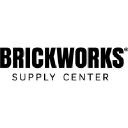
Clay
Clay is a versatile material used in various crafts and art projects.
🏷️ Price not available

- Overview
- Pricing
- Features
- Pros
- Cons
Overview
Clay is a natural earthy material that has been used by humans for thousands of years. It can be shaped when wet and hardens when dried or fired. This makes it perfect for creating art, pottery, and sculpture. Many people find working with clay relaxing and rewarding, as it allows them to express their creativity through hands-on techniques.
There are different types of clay available, each with its unique properties. Some types of clay are best for sculpting, while others work well for making pottery or tiles. Beginners often start with air-dry clay, which does not require a kiln and is easy to use. Experienced artists might prefer stoneware or porcelain, which require firing at high temperatures but offer a refined finish.
In addition to being used for artistic purposes, clay also has practical applications in construction and medicine. From building materials to facial masks, clay is a remarkable substance that serves various functions. Because of its accessibility and ease of use, clay continues to be a beloved medium for people of all ages.
Pricing
| Plan | Price | Description |
|---|---|---|
| Small-Business | N/A | 29% more expensive than the avg. Sales Intelligence product https://www.g2.com/products/clay-com-clay/reviews?filters%5Bcompany_segment%5D%5B%5D=179 |
Key Features
🎯 Versatile Material: Clay can be molded into various shapes and forms, making it suitable for different art projects.
🎯 Easy to Use: Beginners can start creating immediately without needing special skills or tools.
🎯 Non-Toxic: Most types of clay are safe for kids and adults, allowing for family-friendly crafting.
🎯 Variety of Types: There are many clay types available, including earthenware, stoneware, and porcelain; each has its own use.
🎯 Air-Dry Options: Many clays do not require firing, making them more accessible to those without a kiln.
🎯 Durable: Once hardened, clay can be quite strong, especially when fired, suitable for long-lasting creations.
🎯 Texturing Ability: Clay can easily be stamped or carved, allowing for detailed designs.
🎯 Affordable: Clay materials are generally cost-effective, providing good value for creative projects.
Pros
✔️ Encourages Creativity: Working with clay allows individuals to express their artistic side.
✔️ Therapeutic Effects: Many people find working with clay relaxing and a great way to relieve stress.
✔️ Great for All Ages: Clay crafts can be enjoyed by both kids and adults, making it a fun family activity.
✔️ Available in Different Forms: Clay can be found in soft, hard, and air-dry varieties, catering to different skill levels.
✔️ Easy to Clean: Most clay types can be easily washed off surfaces, making cleanup simple after crafting.
Cons
❌ Drying Time: Clay projects can take a long time to dry before they can be used or painted.
❌ Messy Process: Working with clay can be quite messy, requiring careful cleanup after use.
❌ Requires Firing: Some types of clay need to be fired in a kiln, which not everyone has access to.
❌ Limited Outdoor Use: Once dried, clay items can be affected by weather conditions if left outside.
❌ Vulnerability: Non-fired clay can break easily if dropped or mishandled, limiting its durability.
Manage projects with Workfeed
Workfeed is the project management platform that helps small teams move faster and make more progress than they ever thought possible.
Get Started - It's FREE* No credit card required
Frequently Asked Questions
Here are some frequently asked questions about Clay. If you have any other questions, feel free to contact us.